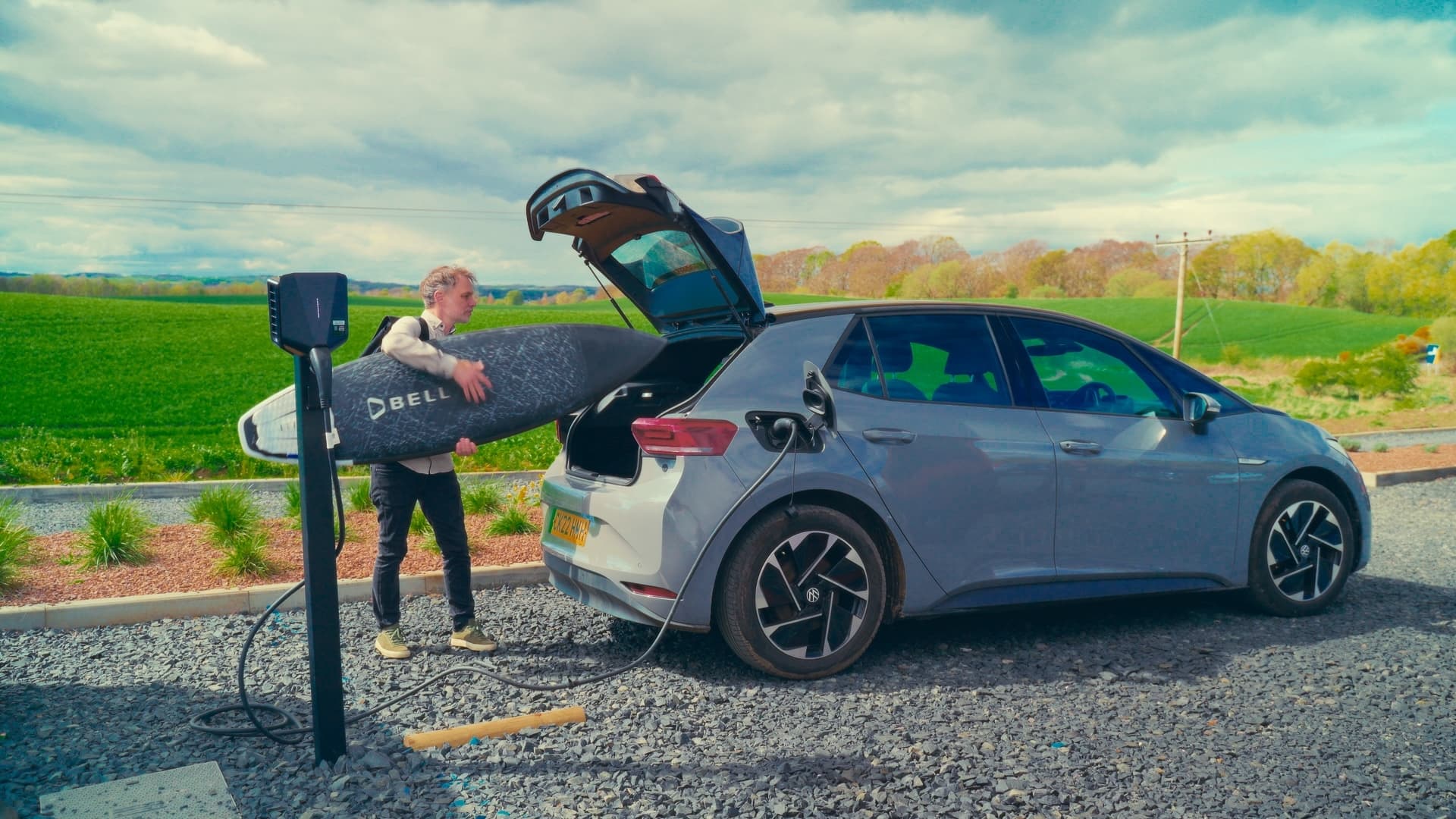This is how our RCD works
Easee’s EV chargers have a built-in RCD that tests itself at least 365 times a year, so that you never charge without ground fault protection.
Safety is at the very top of the priority list when we develop new products. And we get the help of independent third parties right from the planning stage to ensure that the components we use are fit for purpose.
One of the most important factors in safeguarding the safety of an electrical installation is that you have sufficient protection against ground faults.
What is a ground fault
In short, a ground fault means that a current-carrying conductor leaks current to ground. If this current passes through a body, it can be dangerous if the current is too large.

Ground faults can occur in the fixed installation or in connected electrical equipment such as coffee makers or electric radiators. Or in electric cars, charging cables and charging stations.
To guard against fire, electric shock and other electricity-related damage, strict requirements are placed on how the electrical system must react if a ground fault occurs.
How are you protected against ground faults?
One of the most important components of our charger is the RCD. This protection has two tasks: The first is to detect leakage current from the current conductors to ground. The second is to cut the power supply to the affected plant parts. This must happen so quickly that the current does not have time to cause damage before it is disconnected.
With such a large responsibility on your shoulders, it is absolutely essential that everything works as it should – always. Ground fault circuit breakers of the type you find in the fuse box are therefore equipped with a separate test button that is used to test the ground fault protection at fixed intervals. The instructions vary slightly between manufacturers, with some recommending testing every three months while others believe that once a year is sufficient.
In order to remember this, it is a good habit to enter regular reminders in the calendar – it might also be a good habit to test your smoke detectors as well while you’re at it.

Tested at least 365 times a year
In Easee, we have integrated a separate RCD for AC and DC ground faults directly in the charging box. This is a physical, dedicated protection that is placed directly behind the Type 2 connector. The RCD is encapsulated, but even if you can’t touch it, it meets all the relevant standards for you to be able to charge safely.
One of the advantages of our solution is that it tests itself without the user having to think about it. This self-test takes place automatically between each and every charging session, and at least once a day otherwise.
If a fault is detected on the RCD, you will not be able to charge, and the charger will turn on a red light. If you have the Easee app, you will also get a notification there.

Approved, tested and proven
The integrated RCD must of course always protect you as well as traditional ground fault circuit breakers when a fault occurs.
In the video at the top of this article, we use the same type of installation testers that electricians use to make sure that everything is in order before they leave a job assignment. Our RCD passes – as it should – both the AC and DC test with ease(e).
Over 500,000 charging stations in operation
At the time of writing, over half a million charging stations from Easee have been installed across Europe, and we have data on over 57.3 million charging sessions.
As you may have noticed, we like to talk about how smart our ecosystem is, how we want to help reduce the load on the power grid and how we envision our technology to develop in the future. All of this is possible because we know that our products are safe and fit for purpose. We are sitting on large amounts of data that allows us all to sleep soundly at night knowing that our products are keeping our customers safe while they do the same.



